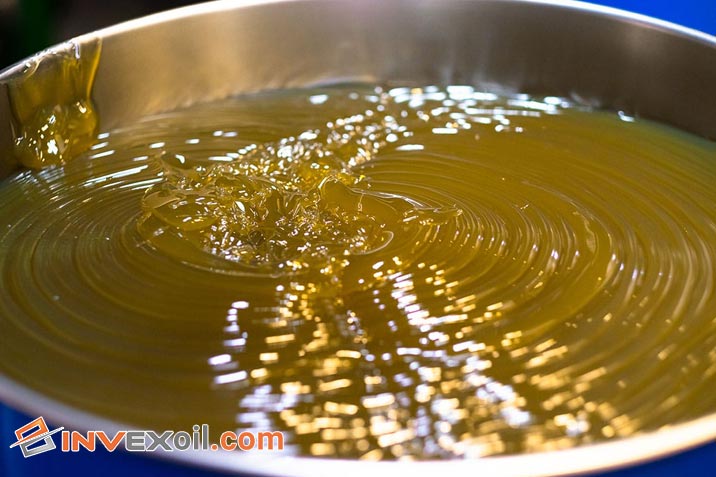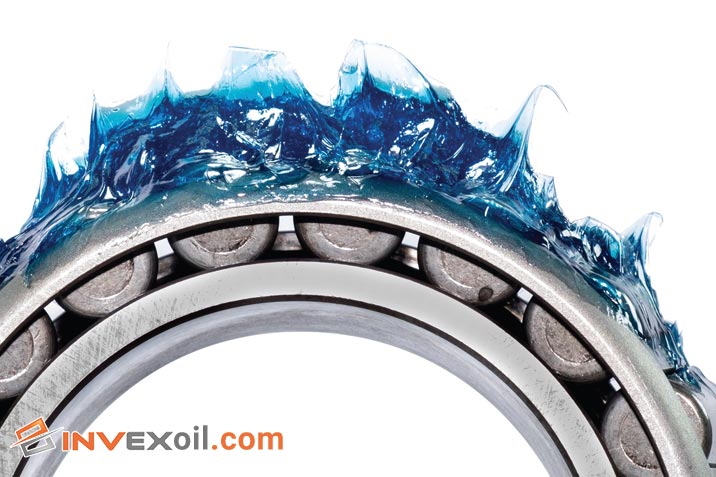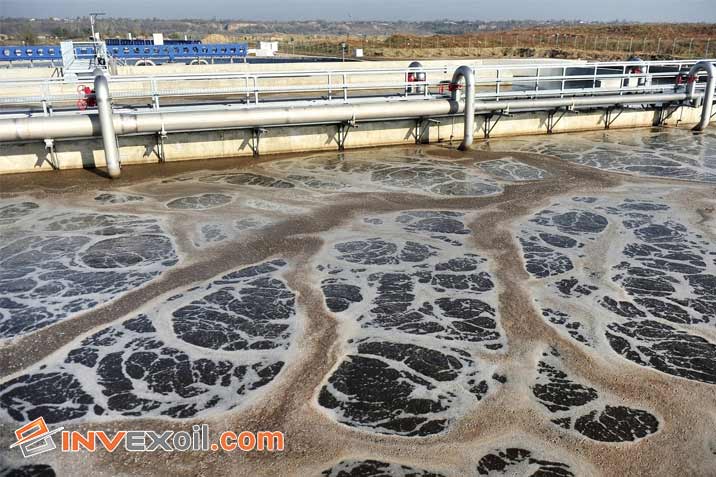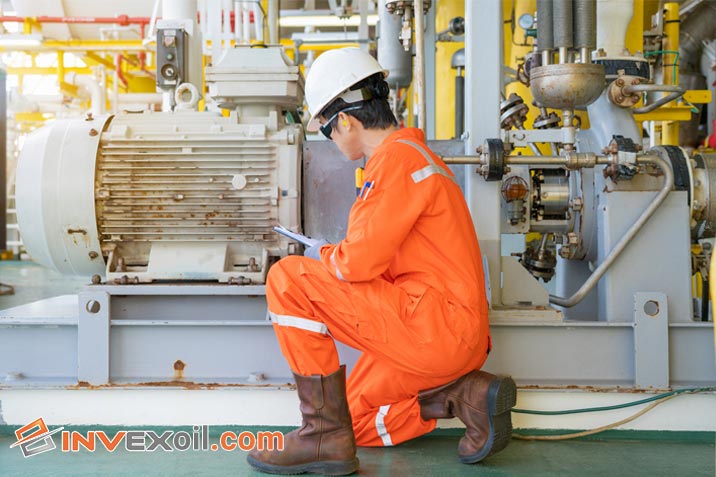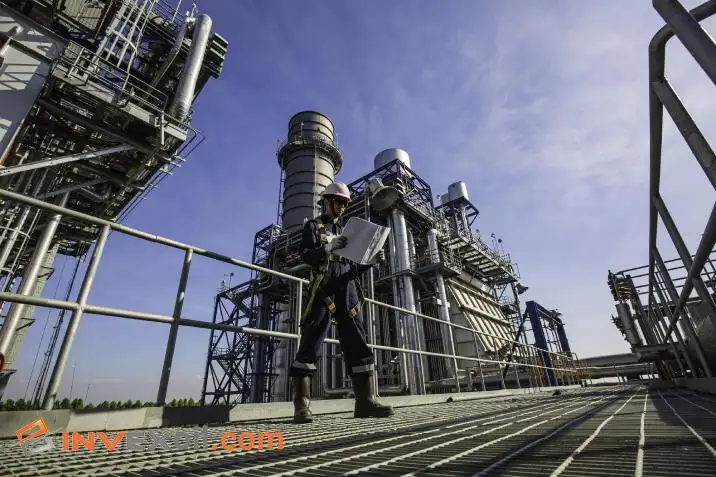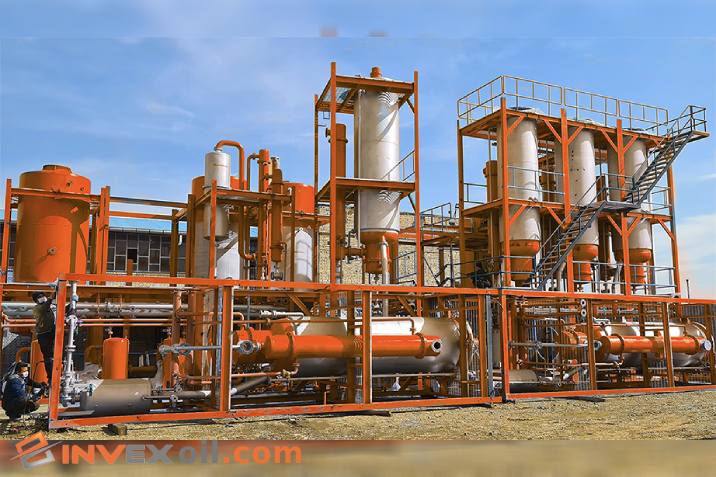Have you ever wondered why grease lubrication is crucial in machinery maintenance? Imagine a world where every machine grinds to a halt due to friction. This analogy clearly shows the indispensable role of grease lubricant in keeping various mechanisms running smoothly. In this article, we will explore the essence of grease lubrication, its components, types, and properties, used oil re-refining and utilizing it as a base for producing grease, its advantages, and its environmental implications.
Table of Contents
Components of Grease Lubrication
As you know, Grease lubrication is a useful invention in our daily lives. They are used in vehicles and machinery and are super useful in various industries like petroleum. To learn more about this assistance, we will check all components of it.
-
Base Oil
Base oil is the cornerstone of grease lubrication. Essentially, it serves as the fluid component within grease, which is important in determining the overall characteristics and performance. Two types of base oils are primarily used: mineral oil vs synthetic oil. Mineral oils derived from refining crude oil are cost-effective and suffice for most general applications.
They are excellent for a broad range of temperatures, usually from -30°C to 175°C, because of their remarkable stability. Conversely, synthetic base oils are designed to withstand harsher environments. They offer better stability in temperatures as high as 250°C and are more resilient to oxidation and thermal deterioration. They are, therefore, perfect for high-performance applications under challenging circumstances.
-
Thickener
Thickeners are to grease what flour is to bread. They are agents that transform liquid oil into a semi-solid state, giving grease its characteristic consistency. The most common type of thickener used is metallic soap, which includes lithium, calcium, and aluminum soaps. These thickeners determine the grease’s consistency and influence its melting point and resistance to water.
Some modern greases use non-soap thickeners like bentonite or polyurea, especially in high-temperature applications, as these materials do not melt like traditional soaps. The choice of thickener impacts the grease’s suitability for specific applications, such as in high-load or high-speed scenarios.
-
Additives
Additives in grease lubrication are like spices in cooking – they enhance performance and protect against adverse conditions. Common additives include antioxidants, corrosion inhibitors, and anti-wear agents. Oxidation inhibitors extend the life of the grease by preventing it from breaking down at high temperatures.
Anti-wear additives, on the other hand, form a protective layer on metal surfaces, reducing wear and tear in high-friction applications. There are also extreme pressure additives for applications where the grease is subjected to high loads, helping to prevent metal-to-metal contact and subsequent damage. The right blend of additives ensures that the grease lubricates effectively and prolongs the lifespan of the machinery components it is applied to.
Types of Grease Lubricants
There are some kinds of grease for many applications. These are Mineral Oil-Based, Synthetic, and Non-Soap Thickeners. Let’s learn about them.
1-Mineral Oil-Based Greases
Mineral oil-based greases are the traditional choice in various industries due to their affordability and reliable performance. These greases are formulated using mineral oil derived from petroleum refining processes in Oil re-refining, making them a versatile option for general-purpose applications.
They are particularly favored for their good water resistance and load-carrying capacity, making them suitable for various machinery components such as bearings, gears, and bushings. The typical temperature range for mineral oil-based greases lies between -30°C and 175°C, ensuring adequate performance under most operating conditions. However, their application might be limited in extreme temperature scenarios.
2-Synthetic Greases
The purpose of synthetic greases is to perform better in abrasive environments. Because synthetic base oils produce these greases, they have better oxidation resistance, thermal stability, and a larger working temperature range of -50°C to 250°C. They are, therefore, appropriate for applications needing a longer service life and high temperatures.
Specialized machinery, such as high-speed bearings and gears, usually uses synthetic greases since mineral oil-based greases might not be suitable in all circumstances. They are frequently employed in more environmentally sensitive applications because of their improved qualities, which include decreased toxicity and biodegradability.
3-Non-Soap Thickeners
In grease lubrication, non-soap thickeners offer certain benefits, especially in high-temperature applications. Compared to standard soap-based thickeners, these thickeners—which include polyurea and bentonite—can tolerate greater temperatures; certain formulations have even been demonstrated to perform effectively at temperatures as high as 300°C.
They stand out for their remarkable water resistance and versatility in working with elastomers and plastics. They are, therefore, suitable for use in the electronics, automotive, and aerospace sectors where conventional greases would not hold up.
Types of Grease Lubricants
| Type | Key Properties | Common Applications | Temperature Range |
| Mineral Oil-Based | Low cost, good water resistance, good load-carrying capacity | Bearings, gears, bushings, other general-purpose applications | -30°C to 175°C |
| Synthetic | High-temperature resistance, good water resistance, good load-carrying capacity, long service life | Bearings, gears, bushings, other extreme-performance applications | -50°C to 250°C |
| Non-Soap Thickeners | High-temperature resistance, good water resistance, good load-carrying capacity, good compatibility with plastics and elastomers | Bearings, gears, bushings, other extreme-performance applications | -50°C to 300°C |
Properties of Grease Lubricants
To understand this useful invention in our life, we will learn about some properties of this in this part.
-
Viscosity
Viscosity is an important factor in grease lubrication, significantly impacting its performance. Regarding grease, viscosity (a fluid’s resistance to flow) impacts how well the lubricant adheres to surfaces under different pressure and temperature conditions. High-viscosity greases help heavy-duty applications substantially because of their high load-bearing ability and improved wear prevention.
But they could also make things more resistant and frictional, particularly in fast-moving situations. Conversely, low-viscosity greases are better suited for high-speed, low-load applications as they are simpler to pump and apply. A machine’s ability to operate effectively and efficiently depends on its viscosity.
-
Consistency
Consistency, or the stiffness and softness of grease, directly affects its applicability and performance. The National Lubricating Grease Institute (NLGI) grading system, ranging from 000 (very soft) to 6 (very stiff), helps categorize greases based on their consistency. A softer grease (lower NLGI grade) is more fluid, ideal for lower load applications, and easier to pump.
In contrast, a stiffer grease (higher NLGI grade) is better suited for high-load and high-speed applications where a thicker lubricant layer is required. The choice of consistency depends on the specific needs of the equipment and the conditions under which it operates.
-
Temperature Range
The grease lubrication’s temperature range refers to the range of temperatures within which it maintains its functional properties. Selecting a grease with an appropriate temperature range is crucial, as it ensures the lubricant remains effective under the operational conditions of the machinery. Greases that become too soft at high temperatures can lose their lubricating ability and leak out of bearings.
At the same time, those that are too stiff at low temperatures may not provide adequate lub or be too difficult to pump which can lead to lubrication failure. Understanding the operational temperature range of the equipment is key to choosing the right grease ensuring longevity and reliability.
Pros and Cons of Grease Lubrication
As you may already know, grease also has some Pors and cons. In this part, we are going to know all of them. First of all, let’s check an insight table:
Pros and Cons of Grease Lubrication
| Pros | Cons |
| Long service life | It can be difficult to apply in some applications |
| Good water resistance | Can be messy |
| Good load-carrying capacity | Can attract dirt and debris |
Advantages
Grease lubrication offers significant advantages, making it vital in various mechanical and industrial applications. Its long-lasting nature ensures sustained lubrication over extended periods, reducing the need for frequent reapplication. This long-term effectiveness is particularly beneficial in equipment that operates in remote or inaccessible locations.
Additionally, grease acts as a barrier against contaminants such as dust and water, protecting machinery parts from corrosion and wear. This protective layer extends the lifespan of components, leading to cost savings in maintenance and replacements. Furthermore, grease’s consistency aids in sealing out contaminants and maintaining a clean lubrication environment.
Disadvantages
Despite its benefits, grease lubrication has its drawbacks. One of the primary challenges is the difficulty in handling and application. Grease requires specific application tools and techniques, which can be messy and time-consuming. Its thick consistency also means it may not be suitable for all types of machinery, especially where intricate or fast-moving parts are involved.
Grease can attract dirt and debris, increasing wear if not properly maintained. Additionally, in high-speed applications, the inherent friction of grease can generate heat, potentially reducing efficiency and increasing energy consumption.
Environmental Impact and Disposal Guidelines
The environmental impact of grease lubrication is a topic of increasing importance. Traditional mineral oil-based greases are frequently non-biodegradable, posing an environmental risk if discarded incorrectly. They can contaminate soil and water sources, causing environmental damage. As such, proper disposal guidelines must be followed. Used grease should be collected and disposed of at a hazardous waste collection facility to prevent environmental contamination.
Conclusion
In wrapping up our exploration of grease lubrication, it’s clear that this element plays a pivotal role in the smooth operation of machinery. From understanding the various types, such as mineral oil-based, synthetic, and non-soap thickeners, to grasping the nuances of viscosity, consistency, and temperature range, we have journeyed through the critical aspects of grease lubrication.
FAQ
What Are the Key Components of Grease Lubrication?
Grease lubrication is primarily composed of base oil, thickener, and additives. The base oil provides the lubricating property, the thickener gives the grease its consistency, and additives enhance performance, like improving resistance to extreme pressures and temperatures.
How Does the Viscosity of Grease Impact Its Function?
Viscosity in grease lubrication determines how effectively it clings to surfaces and bears loads. Higher viscosity greases offer better protection under heavy loads but may increase friction, while lower viscosity greases work well for high-speed, lighter-load applications.
What Are the Environmental Considerations in Using Grease Lubrication?
Environmental considerations include the biodegradability of the grease and its disposal methods. Traditional mineral oil-based greases can be non-biodegradable and harmful to the environment. In contrast, synthetic and non-soap thickeners may offer more environmentally friendly options but still require proper disposal.

Hello, This is Matteo Hudson Copywriter from InvexOil. We are here to provide super-important content to help you learn more easily and be involved in the world of Petroleum and Chemistry. We are here to answer your questions, help you to have better services, and also find the best solution for your problems. Don’t be shy and ask your questions in the comment box or call our number. If you want to connect with me directly, you can search for my name on Linkedin.


